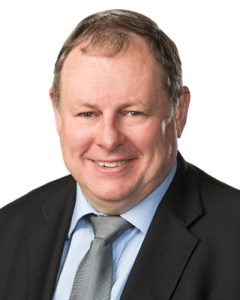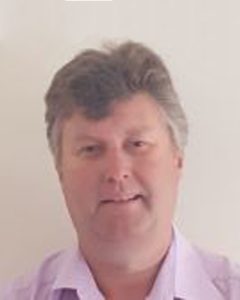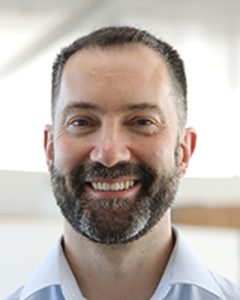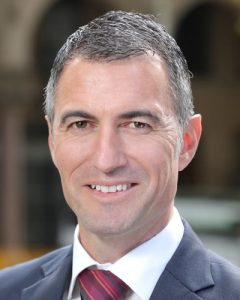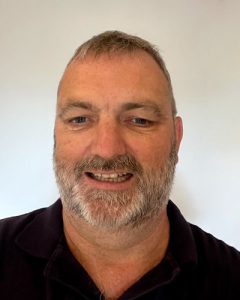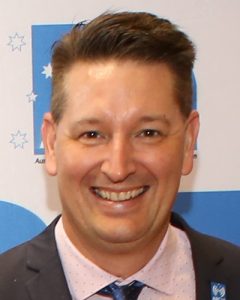We hope you enjoyed the fantastic lineup of speakers at the ARCIA Perth conference.
The following presentations have been made available to Conference attendees:
- Radio spectrum management—what’s trending in 2023?
- Hybrid LMR/LTE devices bring new life to the LMR market
- LTE Network security for private networks
- P25: Still relevant after 30 years?
- Velocity IoT platform paving the way for Mining 4.0
- Efficient Site Design
- Is LORA WAN a viable option for critical messaging?
ARCIA would like to thank all of our presenters for sharing their time and knowledge with us.
———————————————————————————————————————————-
Workshop 1: Radio spectrum management—what’s trending in 2023?
Presented by: Andrew May | Executive Manager, Spectrum Engineering Australia and Peter Hilly | Director, Spectrum Engineering Australia
This half-day workshop included a range of topics covering various facets of the licensing of radio communications services, such as land mobile, fixed links, satellite and wireless broadband. It provided an update on the ACMA’s regulatory arrangements.
This workshop was suitable for those involved in the planning and licensing of radio systems in Australia, and in particular, anyone with responsibilities for the management of the radio licences needed for the operation of their networks.
View Radio Spectrum Management presentation >>
———————————————————————————————————————————-
Hybrid LMR/LTE devices bring new life to the LMR market
Presented by: Hamish Duff | Managing Director, Mastercom and President ARCIA
This session looked at how new devices allow users to get the best of both LMR and LTE networks to achieve benefits beyond voice.
View Hybrid LMR/LTE devices presentation >>
———————————————————————————————————————————-
LTE Network security for private networks
Presented by: Simon Lardner | Co-Founder, Challenge Networks
Private mobile (4G/5G) networks are becoming prevalent in the command and control of critical industrial devices and public safety solutions. As such, the security of systems is becoming a critical design and operational consideration.
This presentation discussed some of the key security considerations both in the design and operation of such networks. It also discussed how security for private networks compared to consumer networks needs to be approached quite differently. This high-level, relatively non-technical presentation was designed for those who already have or are planning to build a private LTE and wish to understand the key considerations and features associated with security.
View LTE Network security presentation >>
———————————————————————————————————————————-
P25: Still relevant after 30 years?
Presented by: Dr Paul Elmes | Managing Director (Asia Pacific), Tait Communications
An objective view of the P25 standard for digital communications. A mature standard by any measure, P25 has become a good case study in user driven standards development and multi-vendor interoperability. The P25 standard continues to evolve and users continue to invest in P25 solutions to meet their current and future communications needs.
This presentation considered how the standard has evolved over the past three decades—with specific reference to major milestones in Australia and New Zealand. It also touched on the growing demand by end users for interoperability with LTE.
View P25 relevancy presentation >>
———————————————————————————————————————————-
Velocity IoT platform paving the way for Mining 4.0 | 12:00 pm-12:30 pm
Presented by: Peter Scarlata | CEO, Simoco Australasia
The mining industry is going through an era of digital transformation with the advent of technologies like the Internet of Things (IoT) which aim to provide cost efficiencies and improve worker safety. This presentation explored the benefits this can bring and how intelligent communications solutions like Velocity can play a leading role in enabling these improvements.
View Velocity IoT for Mining 4.0 presentation >>
———————————————————————————————————————————-
Efficient Site Design | 3:30 pm-4:00 pm
Presented by: Dale Stacey | Managing Director, SAT Pty Ltd
The greatest spend in establishing new mobile radio/telecommunication sites is invariably in the real estate. In particular, access, civil works, and the establishment of tower/building structures and buildings and power. Experience shows that this can equate to >90% of the capital cost. So why is this part of the project so often poorly considered in our build of radio infrastructure projects?
This presentation dealt with lessons learned, oversights, and pitfalls in establishing sites and some future strategies and building checklists to capture fundamentals of what we need.
View Efficient Site Design presentation >>
———————————————————————————————————————————-
Is LORA WAN a viable option for critical messaging? | 4:00 pm-4:30 pm
Presented by: Brad Welch | General Manager Asia Pacific, TPL Systems
Over the last 50+ years there have been many various ways critical messages have been delivered to handheld devices to alert Emergency Responders to critical situations. From the early technologies of Golay, 2-Tone, 5-tone POCSAG and Flex paging, to cellular technologies such as SMS, 2/3/4G data to Smart Phone Apps. All of these have advantages and disadvantages depending on the situational requirement, type of emergency or disaster. In reality, using a combination of these technologies gives the best results for reliability and resilience, meaning messages are delivered quickly to ensure rapid repose when needed.
LoRa WAN is another technology that can be added to this mix and is currently being used by some agencies in Europe. This presentation looked at what the possibilities are for using this technology in Australia, what infrastructure is available now as well as advantages and limitations.
View LORA WAN presentation >>
Presenter Biographies
Andrew May
Executive Manager, Spectrum Engineering Australia | Andrew is the Executive Manager of Spectrum Engineering Australia and has been with Spectrum Engineering for 19 years. During this time he has amassed a broad and intimate working knowledge of the regulatory environment and the coordination and licensing requirements for radio services in Australia. He now leads a team of professional engineers who provide licensing solutions to all sectors of the radio industry including the major carriers, government and the private sector. Andrew holds a Bachelor of Computer Engineering with First Class Honours from the University of Wollongong. He holds accreditation under the Australian Communications and Media Authority to issue Frequency Assignment Certificates and Interference Impact Certificates, and holds Approved Radio Certifier (ARC) status under New Zealand’s Radio Spectrum Management (RSM) branch. |
Peter Hilly
Director, Spectrum Engineering Australia | Peter Hilly is an engineer and the Director of Spectrum Engineering Australia. He spent the early years of his professional engineering career working for Government, including a five year period with the then Department of Communications, Radio Frequency Management Division, eventually occupying the position of Head of the Spectrum Planning Group. He left the Department in 1986 to establish Spectrum Engineering Australia as the first independent provider of frequency management services in this country. In 1995 he became the first person to become “accredited” under the new Radiocommunications Act to issue frequency assignment certificates. Peter has a background of some 40 years of continuous “hands on” experience in spectrum management in Australia and has been involved in this business on both sides of the counter. He has followed the development of the spectrum regulatory process in Australia over the lifetime of five regulatory bodies since to Post & Telecommunications Department of the late nineteen-seventies and was witness at the birth of the two Radiocommunications Acts, 1983 and 1992. Peter holds a Bachelor of Engineering degree from the University of NSW, and an MBA from the University of Canberra. |
Hamish Duff
Managing Director, Mastercom; President, ARCIA | Hamish is the Managing Director of Mastercom and a founding Director of the Orion Network. A specialist in wide-area radio networks, Hamish has a genuine understanding of the pressures faced out in the field and the role that efficient communications plays to help people every day. Hamish is passionate about transforming businesses through the application of digital mobile radio technology. With a career in communications spanning more than 30 years, Hamish is skilled in making the complex simple —engineering communication solutions to support the needs of all users—from the control room to the field. A member of the Australian Radio Communications Industry Association (ARCIA), Hamish is highly regarded for his technical competency and in 2009 was awarded an ARCIA technical excellence award. |
Simon Lardner
Co-Founder, Challenge Networks | Simon is the co-founder of Challenge Networks, a telecommunications system integrator specialising in the design, build and management of small-scale carrier networks around the world. More recently, Challenge has become a world leader in the deployment of private LTE networks for the resources sector. Simon has over 27 years of international experience in the telecommunications industry specialising in mobile network design and implementation. |
Paul Elmes
Managing Director (Asia-Pacific), Tait Communications | Originally from the UK, Paul emigrated to New Zealand in 2006 where he worked for Tait Communications as a product manager and principal engineer until early 2010. An engineer by training, Paul began his career as a research scientist at the UK’s Defence Evaluation and Research Agency. During this time, Paul completed a doctorate on the development of novel sonar transducers for the Royal Navy. Paul has a broad background of experience across both the public and private sectors, holding senior positions in government departments, educational establishments and commercial enterprises. Paul returned to Tait Communications in 2016 as the Product Line Manager for the P25 portfolio. Most recently, he was the VP of Product Management, responsible for Tait’s global product portfolio. |
Peter Scarlata
CEO, Simoco Australasia | Peter Scarlata has over 25 years of experience working at senior levels in national and multinational engineering, system integration, product management, sales and marketing and general management in companies such as Bosch, Intelematics, CNG Systems and most recently Simoco Wireless Solutions. Peter’s qualifications include a Bachelor of Engineering (B.Eng.), Electrical, Electronics and Communications Engineering and a Bachelor of Applied Science (B.App.Sci) in Computer Science. He has led system integrator CNG Systems, where he drove the organisation into a period of significant company growth focused on the transport infrastructure and government verticals. Furthermore, Peter has held several senior positions over a 17 year period at multinational company Bosch in both the automotive and proaudio sectors and has spent time globally in Germany, US, China and Australia leading teams of product managers, engineers and purchasing personnel in driving high volume, quality and value electronic, audio and RF products to market. Peter has been the CEO of Simoco Australasia for over 3 years and is responsible for business growth within the Australasia division. His focus is on important infrastructure projects and overseeing all management, system engineering, sales and marketing activity, as well as national and multinational product management and development. Peter is a strong advocate for Australian R&D and manufacturing which Simoco Australasia contribute to. |
Dale Stacey
Managing Director, SAT Pty Ltd | Dale Stacey has spent more than 25 years in the telecommunications industry. He is a Chartered Engineer (IET,UK and IEAust, Australia and a member of IEEE,USA) and has an extensive range of knowledge and experience in the worldwide radio communications sector. Dale has managed and delivered many major projects through all phases of their life cycle, from concept and strategy, through development of the business case, design, optimisation, installation, integration, test and commission, acceptance and maintenance. Dale has gained experience of such projects from a number of perspectives, including that of the supplier, vendor, buyer, user, integrator and consultant. Dale’s previous experience includes numerous design and implementation assignments for major public utilities both worldwide and within Australia (electricity, gas, oil and water), and telecommunications carrier projects (GSM, 3G and microwave projects for Telstra, Optus, Vodafone, BT). More recently, he has been involved in extensive coverage analysis, optimisation and drive testing of private networks, and 3G and 4G networks. He is currently working on the 5G revolution and other private network innovations in emergency services, smart city and IoT. |
Brad Welch
General Manager, TPL Systems, Asia Pacific | Starting as an Apprentice Radio Technician in Mt Isa, Brad has over 30 years’ experience in the Critical Communications industry including over 25 years’ experience in Critical Messaging. This experience has seen him working for companies such as Hutchison Telecoms (now Vodafone Messaging), Selective Communications in New Zealand, WiPath Communications Australia and now TPL Systems Asia Pacific. Brad has been heavily involved with providing critical response solutions and support in the Emergency Services and Healthcare markets. Brad’s strength is listening to the customer and their requirements, using his experience to provide the most suitable outcomes to shorten critical response times and maximise the customer experience. |



